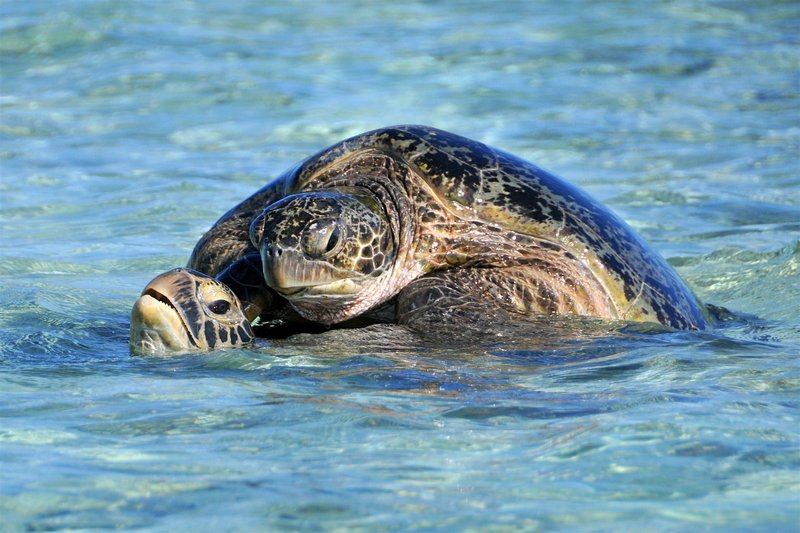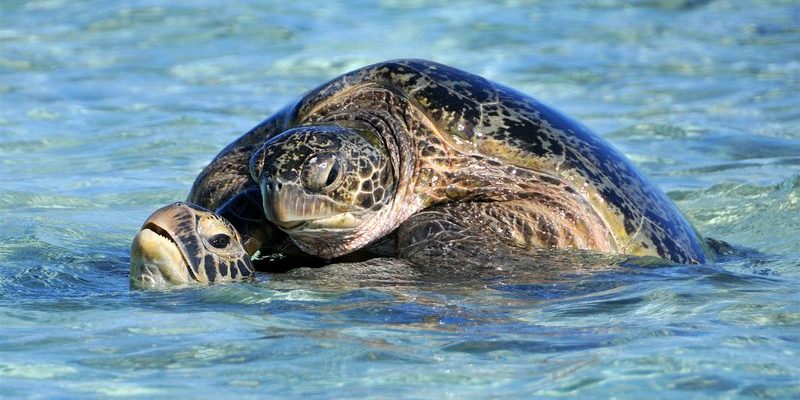
Let’s dive into how these magnificent turtles go about their mating and nesting routines. Sea turtles are unique not just in their biology but also in the way they navigate the complex world of reproduction. As we explore this topic, I’ll share insights that will illuminate the mystery behind their life cycles.
Understanding Sea Turtle Mating Habits
Sea turtles typically mate in the water, often near their nesting beaches. During courtship, males will display some interesting behaviors. They might follow females for days, using their front flippers to gently nudge her and initiate mating. It’s almost like a dance of sorts, where the male must prove himself worthy of the female’s attention.
Once the female chooses a mate, the actual mating process can last several hours. This intense interaction can occur multiple times over a few days, which helps ensure a successful fertilization. Honestly, it’s a rough-and-tumble world out there for these turtles, where every interaction counts for their future offspring.
It’s worth noting that sea turtles can store sperm for several years! This means a female can mate once and still lay multiple clutches of fertilized eggs over time. Think of it as having a backup supply; she doesn’t need to find a mate every season, which is essential for survival in their vast ocean habitat.
Nesting Grounds: The Journey to Lay Eggs
After mating, females undertake the remarkable journey to their nesting sites. Most sea turtles are known to return to the beaches where they were born, showing a strong sense of place. Imagine navigating thousands of miles across the ocean just to end up back where it all started!
Once the female reaches the beach, she begins the nesting process. She looks for a safe spot, usually above the high tide line, where she can dig a nest using her back flippers. This digging can take anywhere from 30 minutes to two hours. It’s quite a sight to see as she carefully creates a hole to deposit her eggs into, pouring her energy into this incredibly vital task.
A typical clutch can range from 50 to over 100 eggs, depending on the species. After laying her eggs, she covers them with sand, returns to the sea, and leaves them to incubate. The temperature of the sand plays a crucial role here; it can even determine the sex of the hatchlings. Warm sand typically results in more females, while cooler sand tends to produce males. Isn’t that wild?
Incubation Period and Hatching
The incubation period for sea turtle eggs usually lasts about 60 days, but this can vary by species and environmental conditions. During this crucial time, the eggs develop quietly beneath the sand, protected from predators. The heat of the sun is both a blessing and a challenge. Too hot and the developing embryos may not survive, too cool and they might take longer to hatch.
As the hatching date approaches, the baby turtles start to communicate with each other, even from inside their eggs. They use a series of sounds and movements to indicate they are ready to break free. When the time comes, they all start to hatch at once, creating a little frenzy of activity under the sand, which is a survival mechanism to overwhelm potential predators.
Once they break free, the hatchlings make a beeline for the ocean, instinctively heading towards the brightest horizon. You might picture them racing across the sand, vulnerable yet filled with the instinct to survive. Sadly, many won’t make it, facing threats from birds, crabs, and even humans, but the few that do embark on a lifelong journey of resilience.
Threats to Sea Turtle Reproduction
Despite their ancient lineage, sea turtles face numerous threats during their breeding and nesting cycles. Habitat loss is a significant issue, as coastal development can destroy their nesting sites. When humans build resorts or other structures on beaches, it disrupts the natural landscape where these turtles lay their eggs.
Pollution is another dire threat. Plastic waste in the ocean can entangle turtles or be ingested, leading to serious health problems. Here’s the thing—oil spills and climate change are also causing chaos in their habitats. Rising sea levels can inundate nesting beaches, limiting their ability to reproduce successfully.
Additionally, illegal hunting remains a problem in some areas, where turtle eggs are poached for consumption or trade. All of these challenges mean that conservation efforts are critical to ensure sea turtles continue to thrive in our oceans.
Conservation Efforts for Sea Turtles
Recognizing the importance of sea turtles, numerous conservation programs and efforts are underway worldwide. Many organizations focus on protecting nesting beaches, conducting beach patrols to monitor nests, and ensuring they’re protected from predators.
One popular method is the establishment of marine protected areas (MPAs), which safeguard crucial habitats for sea turtles. These areas provide safe havens where turtles can nest and feed without the pressures of fishing or habitat destruction. Innovative technology, like tracking devices, helps researchers understand their migratory patterns and behaviors better.
Community involvement is also vital. Educational programs raise awareness about the importance of sea turtles and encourage local populations to participate in conservation efforts. It’s heartening to see communities banding together to protect these ancient creatures, showcasing how a little effort can make a big difference.
The breeding and reproduction of sea turtles are more than just biological processes; they’re part of a larger story of resilience and adaptation in an ever-changing world. Each hatchling that makes it to the ocean carries with it a piece of history and hope for the future.
While challenges abound, the ongoing commitment to conservation gives these remarkable creatures a fighting chance. By working together—scientists, communities, and individuals—we can help ensure that future generations will continue to witness the incredible journey of sea turtles and the magic of their life cycle. So, the next time you see a turtle, remember: you’re looking at a survivor, a wanderer, and a truly important part of our marine ecosystem.

